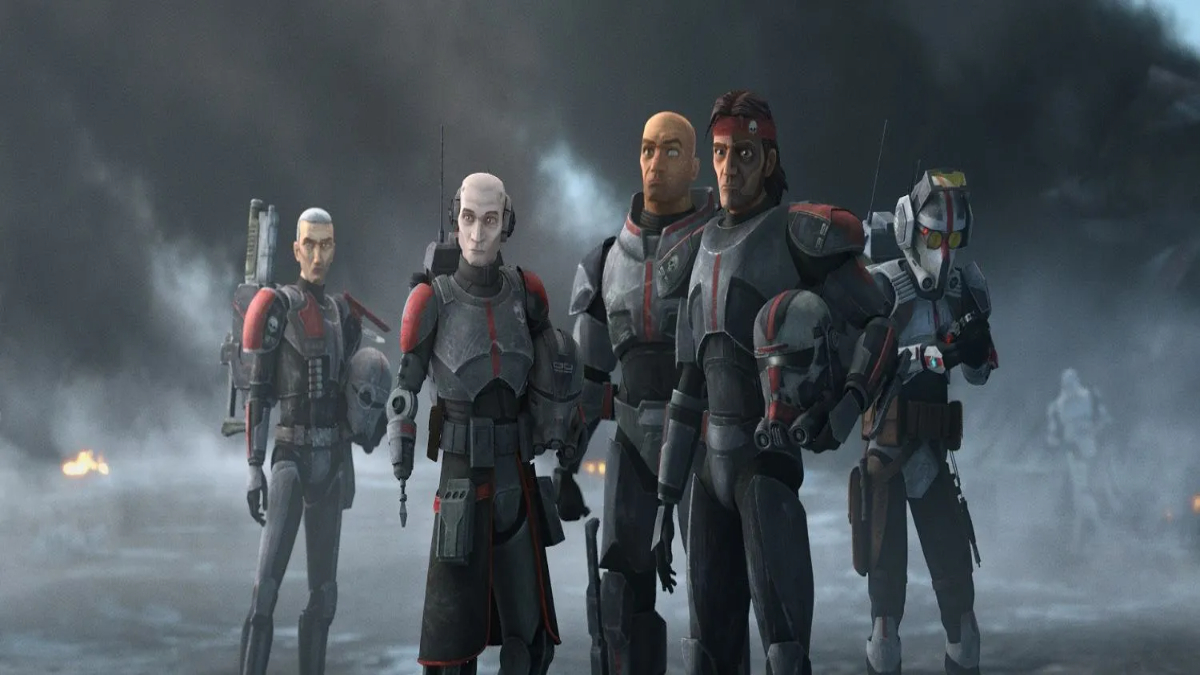
Advertisement
Star Wars, a monumental franchise birthed by George Lucas, has captured the hearts of audiences for over four decades, encompassing an expansive universe of films and shows. At its core lie three trilogies, collectively known as the ‘Skywalker saga,’ tracing the lineage and legacy of Anakin Skywalker and his descendants.
Star Wars in the order of release
Star Wars: Episode IV — A New Hope (1977)
Star Wars: Episode V – The Empire Strikes Back (1980)
Star Wars: Episode VI – Return of the Jedi (1983)
Star Wars: Episode I – The Phantom Menace (1999)
Star Wars: Episode II – Attack of the Clones (2002)
Star Wars: Episode III – Revenge of the Sith (2005)
Star Wars: The Clone Wars (2008-2020)
Star Wars: Rebels (2014-18)
Star Wars: Episode VII – The Force Awakens (2015)
Rogue One: A Star Wars Story (2016)
Star Wars: Episode VIII – The Last Jedi (2017)
Solo: A Star Wars Story (2018)
Star Wars Resistance (2018–2020)
Star Wars: Episode IX – The Rise of Skywalker (2019)
The Mandalorian (2019– )
Star Wars: The Bad Batch (2021– )
The Book of Boba Fett (2021– )
Obi-Wan Kenobi (2022)
Andor (2022–)
Tales of the Jedi (2022–)
Ahsoka (2023–)
The Acolyte (2024–)
Spanning across releases, the franchise offers a plethora of content, ranging from the original trilogy to prequels, sequels, animated series, and standalone films, each enriching the narrative tapestry of the Star Wars universe. While the release order might be the default approach for many, watching the saga in chronological order offers a cohesive journey through time, aiding in a deeper understanding of character arcs and plot developments.
The recommended viewing order entails starting with “Star Wars: The Acolyte,” a newly introduced live-action series set a century before the events of “Star Wars: Episode I – The Phantom Menace,” marking the earliest chronological appearance of Sith adversaries. This series precedes even the events depicted in “Tales of the Jedi,” shedding light on the formative years of iconic figures like Count Dooku and Obi-Wan Kenobi.
Following “The Acolyte,” viewers delve into the prequel trilogy, beginning with “Star Wars: Episode I – The Phantom Menace,” chronicling the emergence of Anakin Skywalker and the political turmoil preceding the rise of the Galactic Empire. Subsequently, “Star Wars: Episode II – Attack of the Clones” delves into Anakin’s apprenticeship to Obi-Wan Kenobi and his tumultuous path towards the dark side, paralleled by the tumultuous Clone Wars in the animated series.
Transitioning seamlessly into “Star Wars: The Clone Wars,” audiences witness the galactic conflict in depth, exploring the intricate dynamics between Jedi and Sith, as well as the rise of pivotal characters like Ahsoka Tano. The series bridges the gap between the prequel and original trilogies, leading to the climactic events of “Star Wars: Episode III – Revenge of the Sith,” culminating in Anakin’s tragic transformation into Darth Vader and the fall of the Jedi Order.
“Tales of the Jedi” offers a deeper dive into the backstories of Ahsoka and Count Dooku, unveiling their evolution amidst a backdrop of galactic upheaval. This anthology series intertwines with pivotal moments from “The Phantom Menace” to “Revenge of the Sith,” providing crucial context to the overarching narrative.
Continuing the journey, “Solo: A Star Wars Story” offers an insight into the formative years of the legendary Han Solo, bridging the gap between the prequels and original trilogy. This standalone film sets the stage for the classic adventures that follow, leading seamlessly into the events of “Star Wars: Episode IV – A New Hope.”
From there, the saga unfolds chronologically, encompassing the original trilogy, where the Rebel Alliance battles the tyranny of the Empire, culminating in the ultimate showdown between Darth Vader, Luke Skywalker, and Emperor Palpatine in “Star Wars: Episode VI – Return of the Jedi.” The subsequent animated series, “Star Wars: Rebels,” explores the early days of the Rebellion, introducing new heroes and expanding the lore of the galaxy far, far away.
Transitioning into the sequel trilogy with “Star Wars: Episode VII – The Force Awakens,” audiences are introduced to a new generation of heroes and villains grappling with the legacy of the past. “The Last Jedi” and “The Rise of Skywalker” conclude the Skywalker saga, exploring themes of redemption, sacrifice, and the enduring power of hope in the face of darkness.
Amidst this epic odyssey, standalone series like “The Mandalorian,” “Star Wars: The Bad Batch,” and “Obi-Wan Kenobi” offer captivating detours, enriching the Star Wars mythos with compelling characters and narratives. Each installment, whether a film or series, contributes to the rich tapestry of the galaxy, inviting audiences to embark on a timeless adventure spanning generations.
